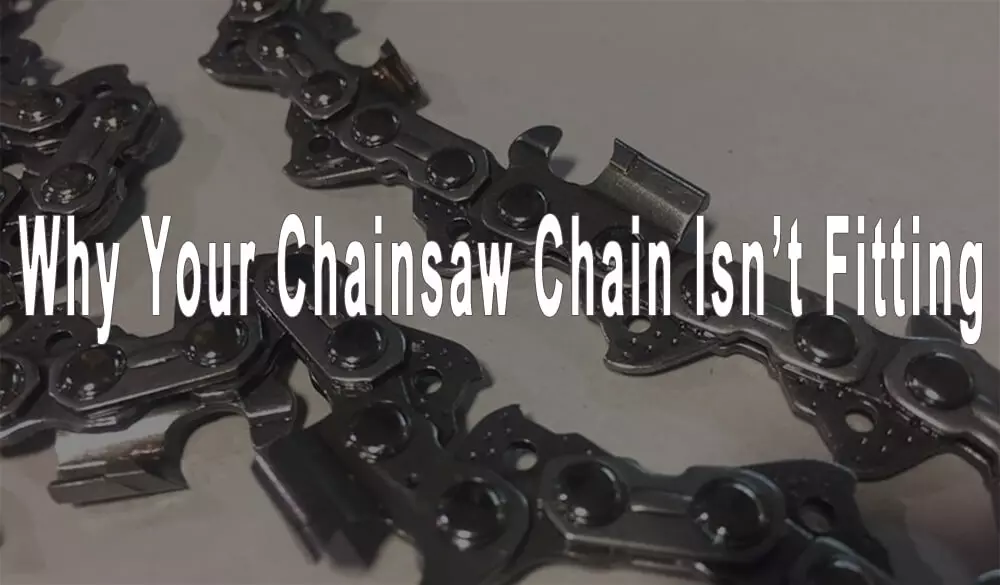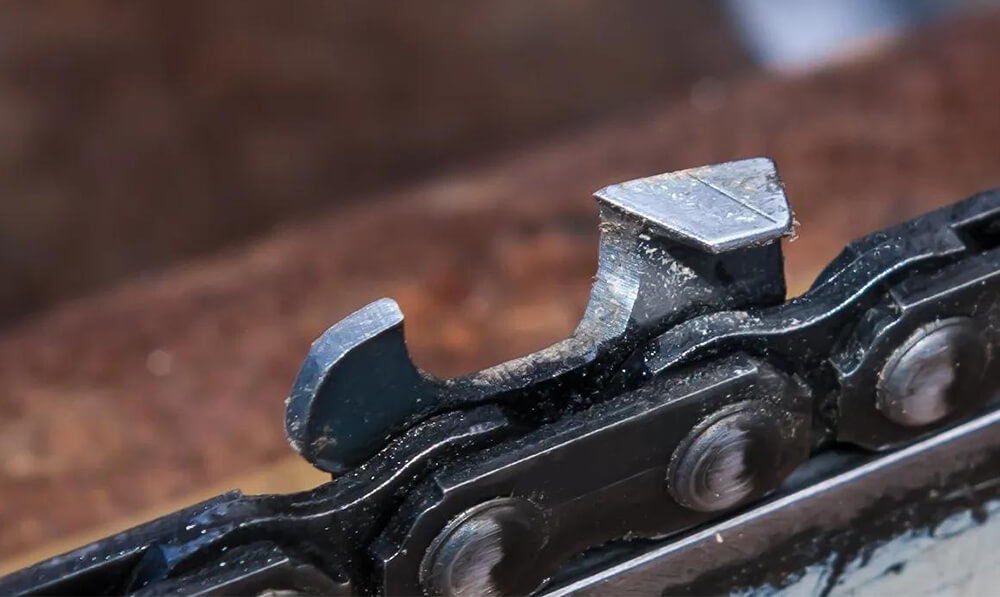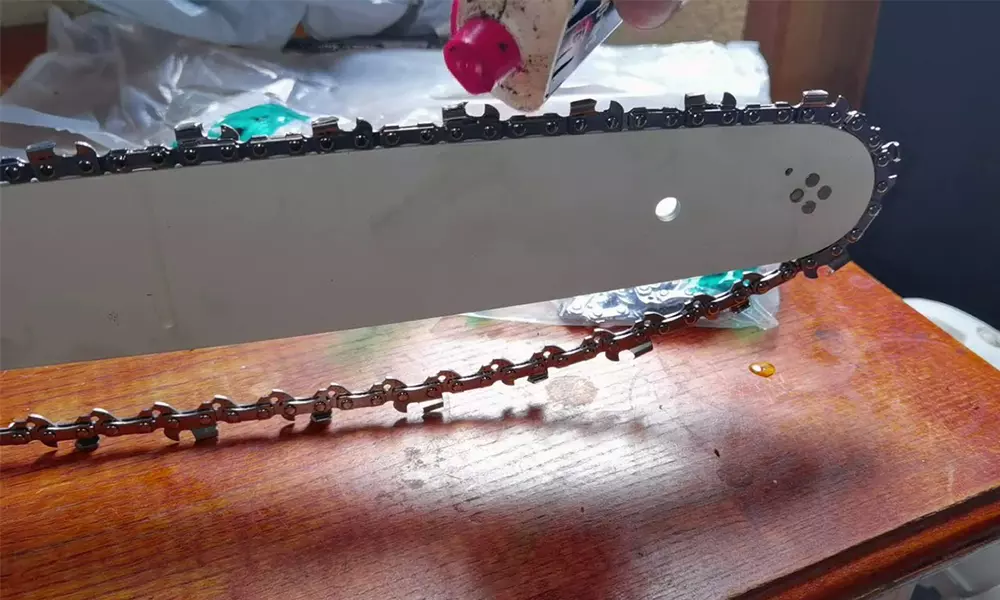23Sep 2023
table of contents

A common problem that users may encounter when using a chainsaw is that the chain will not fit on the saw. This can be exasperating and impede your work progress. In this blog post, BISON will explore some of the reasons why your chainsaw chain may not be suitable and provide practical solutions to help you get back to the task efficiently.
The chain saw chain consists of transmission links, blade teeth, depth gauges and rivets. These components work together to provide efficient cutting performance. Additionally, it's worth noting that chainsaw chains are designed to be compatible with specific chainsaw models for optimal use.
There are several reasons why your chain might not be suitable for your chainsaw. Let's discuss the most common causes of chain incompatibility:
Incorrect Chain Size: One of the primary reasons for chain incompatibility is utilizing an improper chain size. Chainsaw chains are available in various sizes, encompassing both length and width. For proper installation and operation, it is critical that the chain size matches the chain saw model. Using an inappropriate chain can result in reduced performance and potential damage to the chain saw and chain.
Different Chain Pitches or Gauges: Chain pitch refers to the distance between the drive links on the chain, while gauge refers to the thickness of the drive links. Chainsaw manufacturers specify the required pitch and gauge for their chainsaw models. Different series of BISON saw chains have different pitches and come in a variety of specifications. If the chain's pitch or gauge doesn't match the saw's gauge, it won't fit properly. Using an incompatible chain can result in poor cutting performance and increased wear.

Chain Tensioner or Guide Rod Compatibility Issues: Chain tensioners and guide rods play a vital role in ensuring proper chain operation. In some cases, compatibility issues may arise due to differences in the design or size of these components. It is important to use compatible chain tensioners and guides recommended by the chain saw manufacturer. Using mismatched accessories can result in improper chain tensioning, reduced cutting efficiency, and potential safety hazards.
If you find yourself facing a chain compatibility issue, BISON recommends some steps you can take to resolve the issue:
Check your Chainsaw Model and Manufacturer Rcommendations: To ensure chain compatibility, consult your chainsaw manual or visit the manufacturer's website for specific recommendations. Manufacturers usually provide details of the chains that are compatible with their chainsaw models. Take note of recommended chain sizes, pitches, and gauges to find the right chain for your chainsaw.
Proper Measurement and Selection Process: Accurate measurements are crucial when selecting a chainsaw chain. Use a measuring tool to determine the chain size, pitch, and gauge required for your chain saw model. To gauge the size of a chain saw chain, all you need to do is measure the thickness of the drive linkage. You want to measure the portion of the drive link that fits into the guide rod groove. It is difficult to accurately measure meters using a tape measure, so vernier calipers are recommended for this task.
Please be careful and double check your measurements to avoid errors.
In addition to compatibility issues, ill-fitting chainsaw chains often come off the saw.
In most instances, this issue arises from the previously mentioned chain size and measurement errors. Of course, there could be other factors contributing to this problem.
The initial step is to ensure the chain tension on your saw. Different tensioning systems are possible. But the majority of chainsaws utilize springs for maintaining pressure on the blade, securely holding it to the saw blade. However, in order for this mechanism to operate effectively, proper lubrication is necessary. It is recommended to apply stick oil every time you oil your chainsaw. Without proper lubrication, the chain will not run tightly and well on the saw. This may cause it to slip. Make sure the chain tension is correct when applying oil to prevent this from happening.
If the tensioning system is functioning properly and the chainsaw chain still fails to remain in position, it might be necessary to consider replacing the chainsaw bar. Even top-notch gold bars will eventually wear out, which can make it more difficult to maintain the chainsaw chain's proper positioning and tension. In case the rods become worn out, you have the options to replace them with new ones or seek professional assistance for refinishing.A new or repaired bar will effectively secure your chainsaw chain, enabling you to continue using your equipment safely.
If the bar lacks lubrication, you may not be able to install the chain into the bar. Lubrication helps the chain enter the bar easily and run smoothly.
Without adequate lubrication, the chain may become stuck when trying to install it into the chainsaw bar. Lubrication also helps reduce rod tension. Therefore, a lack of lubrication in the connecting rods will increase chain tension, making it impossible to install the chain. Every time you oil your chain saw, BISON recommends that you oil the blade to keep chain tension at a minimum. For lubrication, you can utilize stick oil, available for purchase at the hardware store where you obtain your chain.

There could be other factors causing the chain to come off your chainsaw. We suggest reaching out to the professional service personnel of your supplier for expert guidance in identifying the underlying issue. They have the knowledge and experience to guide you in choosing the right chain and ensure your chainsaw performs at its best.
Looking for more helpful chainsaw advice? Check out BISON's complete guide to chainsaw chains. If you're looking for a new chain for your chainsaw or chain saw, check out our range of BISON electric chainsaw and gasoline chainsaws.
inquiry form here
BISON BLOG, All the latest news and views from Bison Machinery.